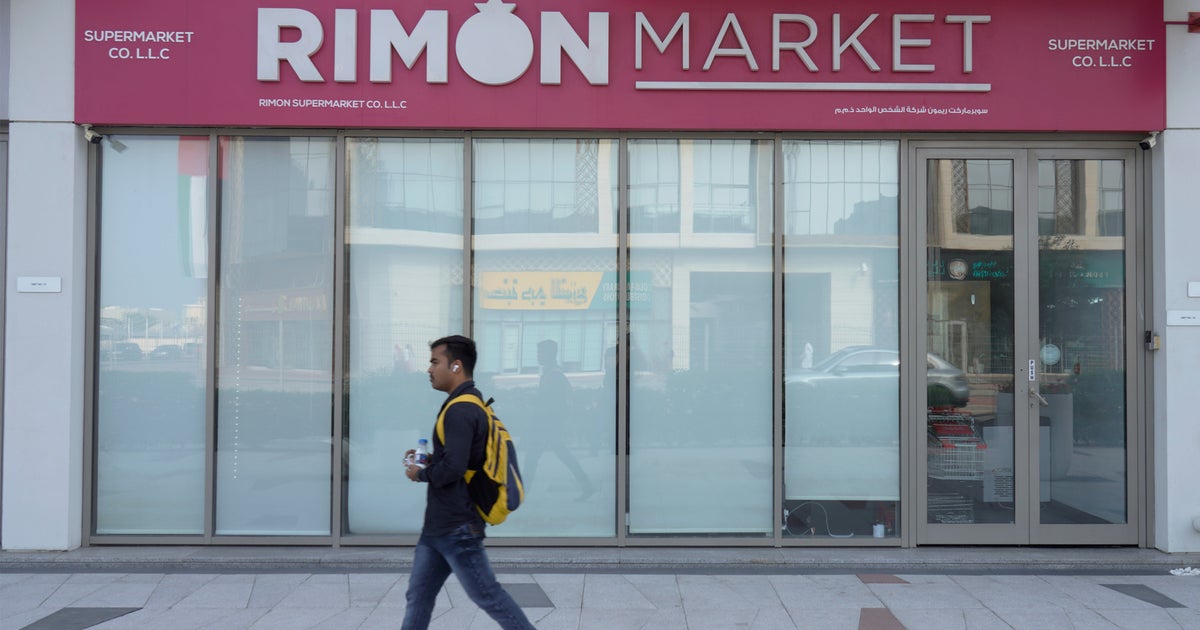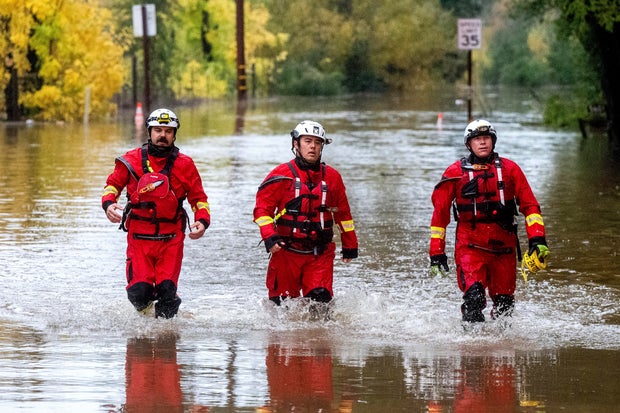CBS News
What drives the price of gold?

Bloomberg Creative Photos
Have you considered investing in gold? If so, you may know that investing in the precious metal is very different from investing in publicly traded companies. After all, gold doesn’t provide dividends, it doesn’t have a managing body and it will never be the target of a corporate acquisition. On the other hand, it does have significant value.
Not only does gold have value, but that value changes with time — which is why investors often look to the commodity as a way to grow or stabilize their portfolios.
But where does that value come from? If earnings reports and acquisition chatter don’t cause movement in the price of gold, what does?
Add gold to your investment portfolio today.
What drives the price of gold?
Before you make any investment, it’s a good idea to do your research and get to know the asset you’re buying. So, if you’re thinking about investing in gold, it’s a good idea to learn about what causes changes in the commodity’s value.
“Gold sure is pretty to look at and people have been mesmerized forever by the allure of gold and what determines its price,” says Steve Azoury, ChFC and owner of Azoury Financial in Troy, Michigan. “It’s believed that three factors usually drive the movement in the price of gold.”
Those factors include:
Inflation
The most common driver for gold’s price is the expectation of inflation, says Azoury. Inflation “increases investors’ interest to purchase, and thus the supply and demand factor takes over, raising the prices.” But why does inflation drive the price of gold?
When high inflation sets in, the United States dollar loses value. Over time, seemingly small changes have a significant impact on your ability to trade a dollar for goods and services. Just think about the difference between prices when you were a kid and prices today. Today’s dollar simply doesn’t buy as much.
Gold has a close relationship with inflation in that when prices rise, the value of gold tends to rise as well. As such, investors often look to gold as a way to protect the value of their portfolios during inflationary periods.
Protect your portfolio from inflation with gold today.
Long-term interest rates
“The second factor impacting the price of gold is expected long-term real interest rates,” says Azoury. “A rise in interest rates usually drives down the price of gold. A decrease in the interest rate will do the opposite, increasing the price of gold.”
So why do long-term interest rates cause movement in the price of gold? It’s a matter of competition.
Gold doesn’t offer a coupon rate, dividend or any other cash return. The return on the commodity is solely determined by its growth in value. Long-term interest-based investments, like treasuries, have a value that’s tied to their percentage-based returns.
Both of these assets are considered safe-haven investments. As such, when long-term interest rates are high, treasuries are more attractive, which can lead to declines in the demand for, and therefore the price of, gold.
On the other hand, as long-term interest rates fall, bonds and treasuries tend to lose their momentum — leading to higher demand for gold.
Market and economic conditions
“Finally, the third factor that drives the movement in the price of gold is uncertainty in the market,” says Azoury. “Gold prices seem to protect against bad economic times, which some refer to as the pessimism about the future conditions factor. People seem to flock toward gold when the economy is in bad shape.”
Ultimately, gold is a safe-haven asset. So, when the market and economic conditions are concerning and investors are seeking safety, they tend to flock to gold — causing its price to climb.
How to add gold to your investment portfolio
As a safe-haven commodity, gold has a place in just about any investment portfolio. So, how can you add it to yours? Here are a few options:
- Physical gold: You can buy physical gold coins and bars and store them in your safe or a depository.
- Gold ETFs: Gold exchange-traded funds (ETFs) pool money from a large group of investors and use that money to purchase physical gold. Shareholders share in the gains that gold produces based on the number of shares they own.
- Gold mining ETFs: Gold mining ETFs pool money from a large group of investors and typically use that money to invest in a diversified portfolio of mining stocks. Purchasing shares in these funds usually gives you exposure to gold as well as the potential gains associated with the companies that produce it.
The bottom line
Several factors play a role in the price of gold, but it all boils down to one thing: the law of supply and demand. When economic or market conditions lead to an increase in gold’s demand, you can expect to see gains in the price of the commodity. On the other hand, when gold’s demand decreases, the price of the commodity typically follows.
CBS News
90-year-old great-grandmother graduates from New Hampshire college 50 years after finishing degree

MANCHESTER N.H. – Some people may have thought there was a celebrity in the building at Southern New Hampshire University’s graduation on Saturday. Annette Roberge certainly felt like one as she crossed the stage to get her diploma at 90 years old.
“I’m still on cloud nine,” Roberge said. “I can’t even put it into words. It was exhilarating, it was awesome, it was beyond anything I could’ve possibly imagined.”
Southern New Hampshire University
Degree 50 years in the making
This degree has been decades in the making for the mother of five, grandmother of 12, and great-grandmother of 15. She began taking classes at New Hampshire College, now SNHU, in 1972 one year after her husband of 20 years was killed in Vietnam.
Southern New Hampshire University
She completed several night and weekend courses before it took a backseat to her five kids and two jobs. Roberge worked as an insurance agent while she finished up as a lunch lady at a nearby school. Roberge retired at age 75, but she was a woman who loved learning, and she knew something was missing from her life.
“If I started something I just have to finish it,” Roberge said.
But it wasn’t until recently that Roberge’s daughter began poking around and learned her mom had earned enough credits for an associate’s degree in business administration. Barring some health challenges, Roberge finally walked across the stage on Saturday to the roaring cheers from her fellow graduates and a standing ovation.
“Never give up on learning because what you learn can never be taken away from you,” Roberge said.
“It matters so much for the example it sets about what we do for ourselves, to keep learning and stretching and growing,” SNHU President Lisa Marsh Ryerson said.
“Don’t ever give up on a dream”
Roberge even had a parting message for all of her new fellow graduates.
“If you’ve got a dream don’t let it just sit there. Do something, make it work, don’t ever give up on a dream.”
If you thought Roberge would be satisfied with her associate’s degree you’d be wrong. She plans to start working towards her bachelor’s degree in January.
CBS News
Potential winter storms forecast across U.S. on Thanksgiving week could impact holiday travel

Forecasters around the United States have issued severe weather warnings ahead of another wave of winter storms that could potentially affect travel around the upcoming Thanksgiving holiday. Meanwhile, parts of the Pacific Northwest and California continued to recover from storm damage and widespread power outages, as they braced for more impact.
In California, where a person was found dead in a vehicle submerged in floodwaters on Saturday, authorities braced for more precipitation while grappling with flooding and small landslides from a previous storm. Thousands in the Pacific Northwest remained without power after multiple days in the dark.
The National Weather Service office in Sacramento, California, issued a winter storm warning for the state’s Sierra Nevada for Saturday through Tuesday, with heavy snow expected at higher elevations and wind gusts potentially reaching 55 miles per hour. Total snowfall of roughly 4 feet was forecast, with the heaviest accumulations expected Monday and Tuesday.
“A weak low pressure system will continue directing a plume of moisture at the West Coast over the next few days,” the Weather Prediction Center said in an advisory Sunday, which was effective through Tuesday. “This will likely result in coastal and low elevation rain, while moderate to heavy snow proliferates across the coastal ranges of Washington, Oregon and California.”
The heaviest snow was expected to fall over sections of the Sierra Nevada, forecasters said, noting that areas in the Colorado Rockies would likely see snow showers, too, over the next few days. Another atmospheric river event was forecast to arrive in parts of central California on Tuesday.
The Midwest and Great Lakes regions will see rain and snow Monday and the East Coast will be the most impacted on Thanksgiving and Black Friday, forecasters said.
CBS News meteorologist Nikki Nolan said the holiday outlook was still uncertain at the end of last week, but the weather system could bring rain and snow to the northeastern U.S. while causing temperatures to drop across most of the country, outside of the Southeast.
“While models can change in the days ahead, Thanksgiving Day is showing a low-pressure system moving across the East and entering the Northeast by evening hours,” Nolan said Friday.
Noah Berger / AP
A low-pressure system is forecast to bring rain to the Southeast early Thursday before heading to the Northeast. Areas from Boston to New York could see rain and strong winds, with snowfall possible in parts of northern New Hampshire, northern Maine and the Adirondacks. If the system tracks further inland, there could be less snow and more rain in the mountains, forecasters said.
Earlier this week, at least two people died when severe weather struck the Pacific Northwest, bringing powerful wind and rain, closing schools, and causing widespread power outages. The two who died were killed by falling trees in Lynnwood and Bellevue, both in Washington state, officials said. Hundreds of thousands lost power, mostly in the Seattle area, before strong winds moved through Northern California.
Rescue crews in Guerneville, California, recovered a body inside a vehicle bobbing in floodwaters around 11:30 a.m. Saturday, Sonoma County Sheriff’s Deputy Rob Dillion said, noting the deceased was presumed to be a victim of the storm but an autopsy had not yet been conducted.
Santa Rosa, California, saw its wettest three-day period on record with about 12.5 inches of rain by Friday evening, the National Weather Service in the Bay Area reported. Vineyards in nearby Windsor, California, were flooded on Saturday.
Some 80,000 people in the Seattle area were still without electricity after this season’s strongest atmospheric river, a long plume of moisture that forms over an ocean and flows over land. The atmospheric river overwhelmed parts of the Pacific Northwest as well as California, and was the strongest weather event of its kind seen all season.
The storm system hit the area Tuesday. It was considered a “bomb cyclone,” which occurs when a cyclone intensifies rapidly. Although the intensity of the atmospheric river peaked later in the week, forecasters had warned that another bout of severe weather was still yet to come.
Godofredo A. Vásquez / AP
The power came back in the afternoon at Katie Skipper’s home in North Bend, about 30 miles east of Seattle, after being out since Tuesday. She was tired from taking cold showers, warming herself with a wood stove and using a generator to run the refrigerator, but Skipper said those inconveniences paled in comparison to the damage other people suffered, such as from fallen trees.
“That’s really sad and scary,” she said.
Another storm brought rain to New York and New Jersey, where rare wildfires have raged in recent weeks, and heavy snow to northeastern Pennsylvania. The precipitation was expected to help ease drought conditions after an exceptionally dry fall.
“It’s not going to be a drought buster, but it’s definitely going to help when all this melts,” said Bryan Greenblatt, a National Weather Service meteorologist in Binghamton, New York.
Heavy snow fell in northeastern Pennsylvania, including the Pocono Mountains. Higher elevations reported up to 17 inches, with lesser accumulations in valley cities including Scranton and Wilkes-Barre. Less than 80,000 customers in 10 counties lost power.
Precipitation in West Virginia helped put a dent in the state’s worst drought in at least two decades and boosted ski resorts preparing to open their slopes in the weeks ahead.
CBS News
Missing rabbi killed in the UAE in “heinous antisemitic terror incident,” Israel says

Israel said Sunday that the body of an Israeli-Moldovan rabbi who went missing in the United Arab Emirates has been found after he was killed in what it described as a “heinous antisemitic terror incident.”
The statement from Prime Minister Benjamin Netanyahu’s office said Israel “will act with all means to seek justice with the criminals responsible for his death.” There was no immediate comment from the UAE.
Zvi Kogan, 28, an ultra-Orthodox rabbi who went missing on Thursday, ran a Kosher grocery store in the futuristic city of Dubai, where Israelis have flocked for commerce and tourism since the two countries forged diplomatic ties in the 2020 Abraham Accords.
Jon Gambrell / AP
The agreement has held through more than a year of soaring regional tensions unleashed by Hamas’ Oct. 7, 2023 attack into southern Israel. But Israel’s devastating retaliatory offensive in Gaza and its invasion of Lebanon, after months of fighting with the Hezbollah militant group, have stoked anger among Emiratis, Arab nationals and others living in the UAE.
Iran, which supports Hamas and Hezbollah, has also been threatening to retaliate against Israel after a wave of airstrikes Israel carried out in October in response to an Iranian ballistic missile attack.
The Emirati government did not respond to a request for comment.
Early Sunday, the UAE’s state-run WAM news agency acknowledged Kogan’s disappearance but pointedly did not acknowledge he held Israeli citizenship, referring to him only as being Moldovan. The Emirati Interior Ministry described Kogan as being “missing and out of contact.”
“Specialized authorities immediately began search and investigation operations upon receiving the report,” the Interior Ministry said.
Netanyahu told a regular Cabinet meeting later Sunday that he was “deeply shocked” by Kogan’s disappearance and death. He said he appreciated the cooperation of the UAE in the investigation and said that ties between the two countries would continue to be strengthened.
Israel’s largely ceremonial president, Isaac Herzog, condemned the killing and thanked Emirati authorities for “their swift action.” He said he trusts they “will work tirelessly to bring the perpetrators to justice.”
Kogan was an emissary of the Chabad Lubavitch movement, a prominent and highly observant branch of ultra-Orthodox Judaism based in Brooklyn’s Crown Heights neighborhood in New York City. It said he was last seen in Dubai. The UAE has a burgeoning Jewish community, with synagogues and businesses catering to kosher diners.
The Rimon Market, a Kosher grocery store that Kogan managed on Dubai’s busy Al Wasl Road, was shut down Sunday. As the wars have roiled the region, the store has been the target of online protests by supporters of the Palestinians. Mezuzahs on the front and the back doors of the market appeared to have been ripped off when an Associated Press journalist stopped by on Sunday.
Kogan’s wife, Rivky, is a U.S. citizen who lived with him in the UAE. She is the niece of Rabbi Gavriel Holtzberg, who was killed in the 2008 Mumbai attacks.
The UAE is an autocratic federation of seven sheikhdoms on the Arabian Peninsula and is also home to Abu Dhabi. Local Jewish officials in the UAE declined to comment.
While the Israeli statement did not mention Iran, Iranian intelligence services have carried out past kidnappings in the UAE.
Western officials believe Iran runs intelligence operations in the UAE and keeps tabs on the hundreds of thousands of Iranians living across the country.
Iran is suspected of kidnapping and later killing British Iranian national Abbas Yazdi in Dubai in 2013, though Tehran has denied involvement. Iran also kidnapped Iranian German national Jamshid Sharmahd in 2020 from Dubai, taking him back to Tehran, where he was executed in October.










